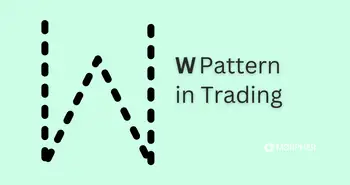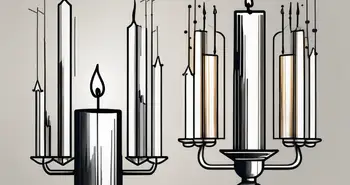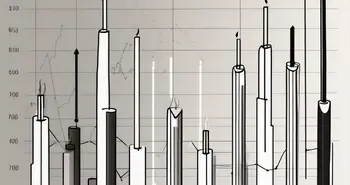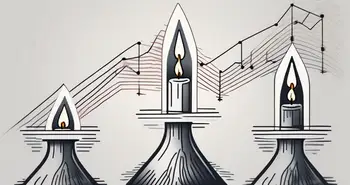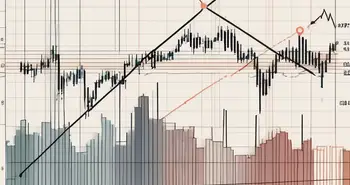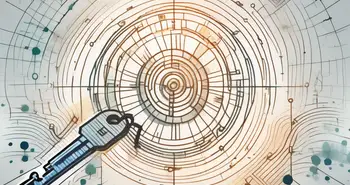The M Trading Pattern: What It Is and How to Use It
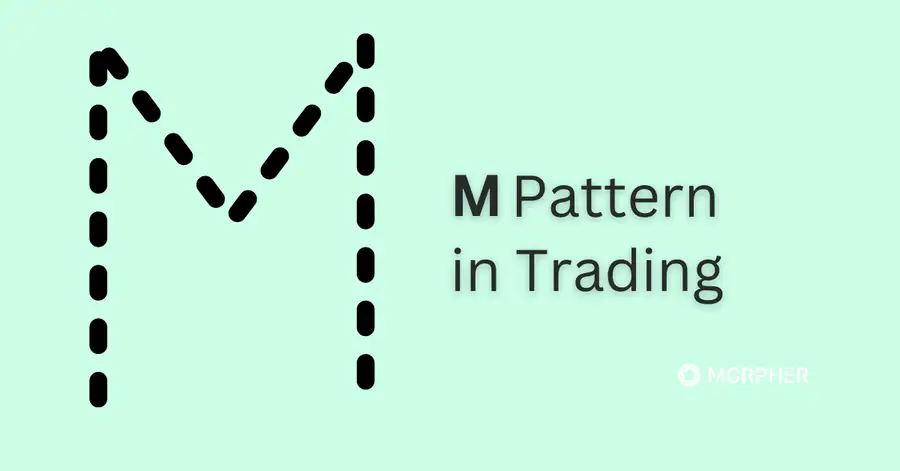
Candlestick patterns have long been a cornerstone of technical analysis, offering traders valuable insights into potential market shifts. By studying price movements and patterns, traders can anticipate changes in market sentiment and make informed decisions. Among these patterns, the M pattern, also known as the double top, stands out as one of the most reliable indicators of a trend reversal.
The M pattern forms after a bullish run and signals a potential shift from upward momentum to a downtrend. But understanding its structure, meaning, and how to use it effectively can make the difference between a profitable trade and a missed opportunity. In this guide, we'll explore what the M pattern in trading is, what it represents in the market, and most importantly, how you can apply it to your trading strategy with confidence.
What is the M Pattern in Trading?
To simply put, the M pattern is a technical analysis formation that resembles the letter “M” when plotted on a price chart, with two peaks forming the top parts of the pattern. The M pattern often referred to as a double top, is a bearish reversal pattern that signals the end of an uptrend and the potential start of a downtrend.
Here’s how the M pattern forms:
- First Peak: After a strong upward price movement, the asset reaches a high point and then experiences a pullback as buyers take profits.
- Second Peak: The price rallies again, but this time fails to break the previous high, resulting in a second peak.
- Decline: After the second peak, the price drops, confirming the pattern when it breaks below the support level formed by the low between the two peaks (often called the “neckline”).
The M pattern is significant because it signals buyer exhaustion, the inability of the market to push the price higher after two attempts. For traders, this means the uptrend is likely ending, and a downtrend could be imminent. To fully understand the M pattern, visualize it as a battle between buyers and sellers. Buyers initially control the market, pushing the price up, but sellers gain strength after the first peak. When buyers attempt to regain control and fail at the second peak, it becomes clear that the market is shifting.
How to Identify the M Pattern in Trading
Spotting the M pattern on a chart can feel like uncovering a hidden clue about where the market is headed next. Here’s a simple way to recognize it in real time, even if you’re just scanning your charts casually.
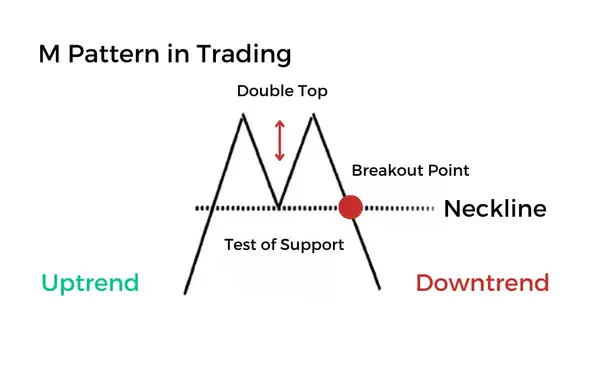
- Look for a Strong Uptrend: The M pattern doesn't just appear out of nowhere—it shows up after a sustained period of upward price movement. So, the first thing you’ll notice is that the price has been rising for a while, possibly reaching new highs.
- Notice the First Peak: After this bullish run, the price reaches a high point but then pulls back. This pullback may not seem like a big deal at first, but it's your first clue that buyers are starting to lose some steam. It’s the top of the first leg of the “M.”
- Watch for a Pullback to Support: The price then drops to a support level—a spot where it pauses or bounces back up. This creates a temporary floor, and it's where the pattern's neckline starts to take shape. Don’t rush here; the key is to see if the price tries to rally again.
- Spot the Second Peak: When the price makes another attempt to rise, pay close attention. If it fails to reach the height of the first peak, you’re likely seeing the formation of the second part of the “M.” This lower peak is a strong signal that the market is running out of upward momentum.
- Wait for the Breakdown: Here’s where things get interesting. After the second peak, the price drops again, heading towards that earlier support level (the neckline). If it breaks below this support, the M pattern is confirmed, and the market may be shifting into a bearish trend. This is your go-ahead signal to act.
Pro Tips:
Symmetry Isn’t Everything
Sometimes the two peaks won’t be perfectly symmetrical. That’s okay. Focus more on the failure of the second peak to reach higher levels than the exact shape.
Volume as Confirmation
If you want extra confidence in your identification, check the volume. A decrease in volume at the second peak often confirms that buyers are losing interest, making the pattern even more reliable.
Understanding Sentiment Behind the M Pattern
The M pattern reflects shifts in market psychology, offering insights into the underlying emotions driving traders at each stage:
1. First Peak: Buyer Optimism
At the first peak, buyer confidence is high, pushing prices upward. However, profit-taking begins, causing a pullback. This marks the first sign of buyer hesitation as traders become cautious.
2. Neckline: Indecision
The price pulls back to a temporary support level (the neckline). Here, buyers try to maintain control, but there’s growing exhaustion. Sellers sense an opportunity but haven’t fully taken over yet.
3. Second Peak: Fading Confidence
When the price tries and fails to surpass the first peak, buyer confidence fades. This failure signals a weakening uptrend, and sellers begin to feel more confident in their positions.
4. Break of Neckline: Bearish Takeover
As the price breaks below the neckline, bearish sentiment dominates. This confirms that sellers are in control, and the market is shifting into a downtrend.
Trading Strategies with the M Pattern
To effectively trade the M pattern, patience is key. Rather than rushing into a position as soon as you see the formation begin, it’s important to (1) wait for confirmation. The critical moment is when the price breaks below the neckline. This confirms that the pattern is valid and signals the beginning of a bearish trend.
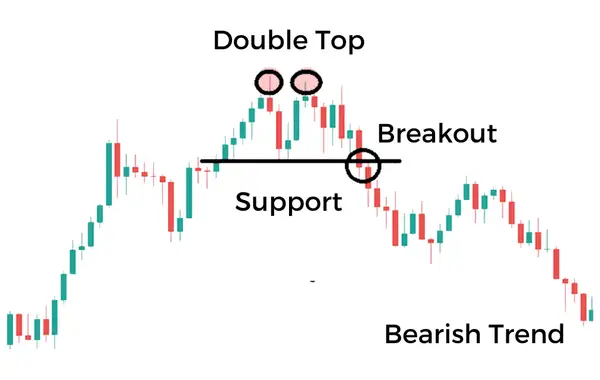
Once the neckline breaks, traders should look to (2) enter a short position. It’s generally best to wait for the price to close below the neckline, adding extra assurance that the bearish momentum is strong enough to continue downward. At this point, setting your (3) stop-loss just above the second peak is a smart risk management move. This gives your trade room to breathe without exposing you to excessive risk in case of a sudden reversal.
For (4) setting a profit target, a simple and effective method is to measure the distance between the neckline and the highest peak of the M pattern. You can project this distance downward to estimate how far the price is likely to drop. This ensures your exit strategy is well-calculated and not driven by emotions or short-term price fluctuations.
To increase the accuracy of your trade, it’s wise to (5) combine the M pattern with other indicators like the RSI or MACD. These tools can help confirm whether momentum is truly shifting in the market, making your trade setup stronger. Another layer of confidence comes from analyzing volume. Typically, you want to see volume decline at the second peak and increase when the price breaks below the neckline. This shows that the selling pressure is real and that the bearish trend is likely to continue.
Finally, (6) risk management should never be overlooked. Be sure to calculate your position size based on the distance between your entry and stop-loss, keeping your risk in check. By doing so, you’re ensuring that even if the trade doesn’t go as planned, your overall portfolio remains protected.
Common Mistakes in M Pattern Trading
Entering Too Early: Jumping into a trade before the neckline breaks can lead to false signals, as the pattern isn't confirmed yet.
Ignoring Volume: Not checking volume can cause missed confirmations, as declining volume during the second peak often signals weakening buyer strength.
Overlooking the Trend: Forgetting that the M pattern forms after an uptrend can lead to misidentification and poor trades.
Setting Tight Stop-Losses: Placing stop-losses too close to the neckline can result in being prematurely stopped out due to normal market fluctuations.
Chasing Symmetry: Expecting perfectly symmetrical peaks can lead to missed opportunities—focus on the price action and overall shape.
Neglecting Other Indicators: Relying solely on the M pattern without confirming with other indicators, like RSI or MACD, can reduce the accuracy of your trades.
Frequently Asked Questions
What is the M trading pattern?
The M trading pattern is a technical analysis formation that resembles the letter “M” on a price chart. It indicates a potential reversal in an upward trend, signaling a shift from bullish to bearish sentiment in the market.
How do I identify the M trading pattern?
The M pattern consists of two distinct peaks separated by a trough in the middle. By examining historical price data, you can identify these peaks and troughs to determine whether an M pattern is forming.
When should I enter a trade based on the M pattern?
It is crucial to wait for confirmation of the M pattern before entering a trade. A break below the neckline, which acts as a resistance level, confirms the pattern and indicates a potential bearish trend reversal.
How can I manage risk when trading the M pattern?
Risk management is essential in M pattern trading. Set your stop loss just above the neckline to protect your capital in case the market reverses, and consider setting a take profit level based on historical support levels or technical indicators.
Can I use the M pattern as the sole indicator for my trades?
No, it is recommended to use the M pattern in conjunction with other technical analysis tools and indicators to confirm your trading decisions.
With the knowledge gained from this comprehensive guide, you are now equipped to master the M trading pattern. Remember, practice makes perfect, so continue to refine your skills and adapt your strategies to the ever-changing market conditions. Happy trading!
Now that you're ready to take on the markets with the M trading pattern, it's time to elevate your trading experience with Morpher. As a platform that's revolutionizing the investment world through blockchain technology, Morpher offers you the ability to trade a vast array of assets with zero fees, infinite liquidity, and the option for fractional investing. Whether you're looking to short sell or leverage up to 10x, Morpher provides the tools you need for a unique and powerful trading journey. Embrace the future of trading and Sign Up and Get Your Free Sign Up Bonus today to start trading like never before. Happy trading!

Disclaimer: All investments involve risk, and the past performance of a security, industry, sector, market, financial product, trading strategy, or individual’s trading does not guarantee future results or returns. Investors are fully responsible for any investment decisions they make. Such decisions should be based solely on an evaluation of their financial circumstances, investment objectives, risk tolerance, and liquidity needs. This post does not constitute investment advice.

Painless trading for everyone
Hundreds of markets all in one place - Apple, Bitcoin, Gold, Watches, NFTs, Sneakers and so much more.

Painless trading for everyone
Hundreds of markets all in one place - Apple, Bitcoin, Gold, Watches, NFTs, Sneakers and so much more.

